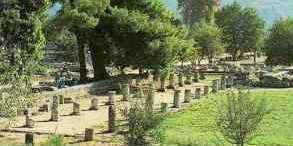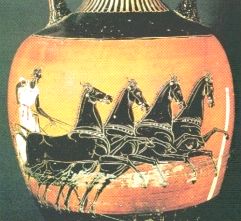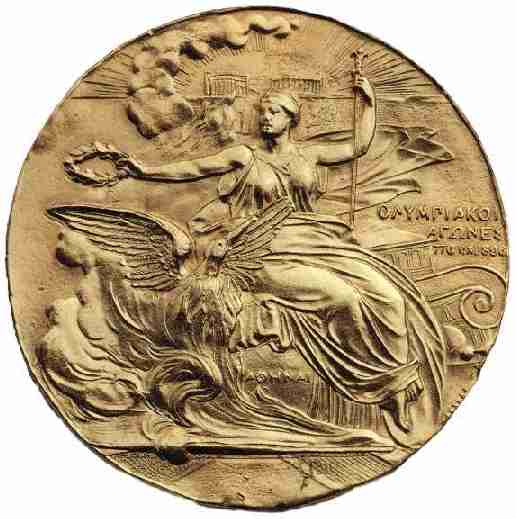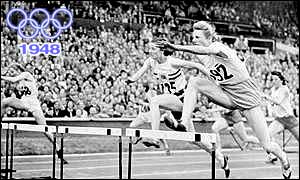Frenzied buying in battered pivotals along with short covering after four straight days of catastrophic fall triggered a solid rally on the bourses today. Strong global markets and a savage cut in crude oil for the second straight day yesterday, 16 July 2008 triggered the rally. The market breadth was strong. Except metal stocks, shares from other sectors rose
Asian and European stocks rallied on Thursday, 17 July 2008 propelled by the biggest surge in US bank shares in 16 years and a sharp drop in oil prices, easing the worst fears about the global credit crisis spiralling out of control.
Political uncertainty will continue to weight on the market in the near term. The government is holding a two-day special session of parliament on 21 July 2008 and 22 July 2008 to seek vote of confidence after it was reduced to minority following withdrawal of support by Left parties on 8 July 2008. The government hopes to retain power due to backing from Samajwadi Party, a regional party in Uttar Pradesh.
The 30-share BSE Sensex surged 536.05 points or 4.26% at 13,111.85. The Sensex opened with a sharp 333.77 point upward gap at 12,909.57 and advanced further to touch a high of 13,150.35 in late trade. At the day's high, the Sensex surged 574.55 points. At the days low of 12,843.79 touched in mid-morning trade, the Sensex gained 267.99 points.
The broader based S&P CNX Nifty advanced 130.50 points or 3.42% at 3,947.20. Nifty July 2008 futures were at 3930.25, at a discount of 16.95 points as compared to spot closing.
The BSE Sensex shed 1350.44 points or 9.67% in four trading sessions to 12575.80 on 16 July 2008 from 13964.26 on 9 July 2008.
The BSE Sensex is down 7175.14 points or 35.36% in the calendar year 2008 so far from its close of 20,286.99 on 31 December 2007. It is 8094.92 points or 38.17% away from its all-time high of 21,206.77 struck on 10 January 2008.
The market breadth was strong on BSE with 1529 shares advancing as compared to 1092 that declined. 70 remained unchanged.
The BSE Mid-Cap index was up 1.32% to 5,155.34 and the BSE Small-Cap index rose 0.99% to 6,387.12. Both these indices underperformed the Sensex.
The total turnover on BSE amounted to Rs 4847 crore as compared to Rs 4,611.44 crore on Wednesday, 16 July 2008.
NSE's futures & options (F&O) segment turnover was Rs 46,300.96 crore, which was higher than Rs 45,738.28 crore on Wednesday, 16 July 2008.
Among the 30-member Sensex pack, 27 advanced while the rest declined
Indias largest real estate developer in terms of market capitalisation DLF galloped 10.93% to Rs 437 on 20.58 lakh shares. It was the top gainer from the Sensex pack.
Auto shares advanced on fresh buying. Indias top small car maker in terms of sales Maruti Suzki India surged 9.52% to Rs 600. Mahindra & Mahindra (up 4.31% to Rs 514.95), Hero Honda Motors (up 2.89% to Rs 657.20), and Tata Motors (up 3.44% to Rs 409), rose
Indias largest private sector firm by market capitalization and oil refiner Reliance Industries rose 4.15% at Rs 2026.15 on 11.07 lakh shares. The stock moved in a range of Rs 2030 and Rs 1965 so far during the day.
Capital goods heavyweights advanced. Indias largest engineering & construction company in terms of order book position Larsen & Toubro jumped 8.11% to Rs 2454.50. The stock is trading 1:1 cum bonus.
Indias largest power equipment maker in terms of sales Bharat Heavy Electricals advanced 5.75% to Rs 1460.50.
India's largest dedicated housing finance company in terms of operating income HDFC vaulted 9.38% to Rs 1881.8. The company reported 25.56% rise in net profit to Rs 468.11 crore on a 26.67% increase in total income to Rs 2318.62 crore in Q1 June 2008 over Q1 June 2007. The results were announced during trading hours yesterday, 16 July 2008.
HDFC chairman Deepak Parekh yesterday denied rumors that Citigroup may sell its 11.74% stake in HDFC to Oman Investment Corporation.
Banking shares witnessed across-the-board rally ahead of the inflation data to be released after market hours today. HDFC Bank (up 5.57% to Rs 955.50), State Bank of India (up 9.33% to Rs 1245), and ICICI Bank (up 6.92% to Rs 555.55), also gained.
Mid-cap banks, Kotak Mahindra Bank (up 4.26% to Rs 465), Axis Bank (up 10.02% to Rs 643), Union Bank of India (up 7.89% to Rs 108), Bank of India (up 7.31% to Rs 243.65), also joined the rally.
Starting this week the government will inflation data every Thursday at 17:00 IST instead of mid-day every Friday.
Indias largest cellular services provider in terms of market capitalisation Bharati Airtel advanced 1.87% to Rs 744, Reliance Communications, the countrys second largest cellular services provider in terms of market capitalisation rose 4.66% to Rs 417.90.
Two oil exploration heavyweights saw divergent trend. Oil & Natural Gas Corporation (ONGC) soared 4.22% to Rs 902.90 while Cairn India lost 3.77% to Rs 215.90
Indias largest cigarette manufacturer in terms of sales ITC gained 3.51% to Rs 168. As per recent reports Amar Singh, whose Samajwadi Party is the key to the survival of the ruling Congress-led UPA Government wants the Unit Trust of India (UTI) and other public financial institutions to divest their stake in ITC in favour of British American Tobacco (BAT). Public financial institutions have a combined 37.62% (as at end March 2008) holding in ITC, which includes 11.90% of UTI and 13.65% of Life Insurance Corporation of India.
IT pivotals rallied. TCS surged 6.83% to Rs 773 after the company reported 8.58% rise in net profit to Rs 1204.01 crore on a 5.99% increase in total income to Rs 5321.88 crore in Q1 June 2008 over Q4 March 2007. The results were declared after market hours yesterday, 16 July 2008.
Infosys Technologies (up 2.25% to Rs 1581), Satyam Computer Services (up 5.26% to Rs 415.25), and Wipro (up 2.36% to Rs 380), edged higher from IT pack.
Reliance Infrastructure (up 4.67% to Rs 801.25), Jaiprakash Associates (up 9.34% to Rs 149.25), were the other gainers from Sensex pack.
Indias largest pharma company in terms of sales Ranbaxy Laboratories was the top loser from the Sensex pack. The stock slumped 3.89% to Rs 452.40 on profit booking after surging 15.03% to Rs 470.70 yesterday, 16 July 2008. The counter saw high volumes of 69.68 lakh shares. The stock surged wildly in a range of Rs 494.40 and Rs 431 today.
The stock galloped after the company's chief executive Malvinder Singh yesterday, 16 July 2008 said in a televised conference that the deal with Japan's Daiichi Sankyo remains on track. He also said that the firm would provide all information required for a probe by the US authorities within the next month.
Steel stocks extended early losses on reports the government may consider setting up a price band for steel products to control inflation. Tata Steel (down 2.91% to Rs 607.50), Sail (down 6.29% to Rs 119.20), and Kalyani Steel (down 1.05% to Rs 146), declined from steel sector.
Besides metal stocks like Sterlite Industries (down 5.69% to Rs 608), National Aluminium Company (down 4.78% to Rs 336.50), and Hinstan Zinc (down 0.02% to Rs 527.80) were not spared either.
Ranbaxy Laboratories was the top traded counter on BSE with turnover of Rs 316.39 crore followed by Reliance Petroleum (Rs 288.68 crore), Reliance Capital (Rs 243.26 crore), Reliance Industries (Rs 221.65 crore), and Larsen & Toubro (Rs 176.10 crore), in that order.
Reliance Petroleum led the volumes chart notching volumes of 1.92 crore shares followed by Reliance Natural Resources (1.56 crore shares), IFCI (1.45 crore shares), Ispat Industries (1.05 crore shares) and Chambal Fertilisers (89.55 lakh shares), in that order.
State run oil-marketing companies extended yesterday gains after sharp fall in crude oil prices for the second straight day yesterday, 16 July 2008. Hindustan Petroleum Corporation (up 5.10% to Rs 207.95), Bharat Petroleum Corporation (up 7.74% to Rs 272.10)





